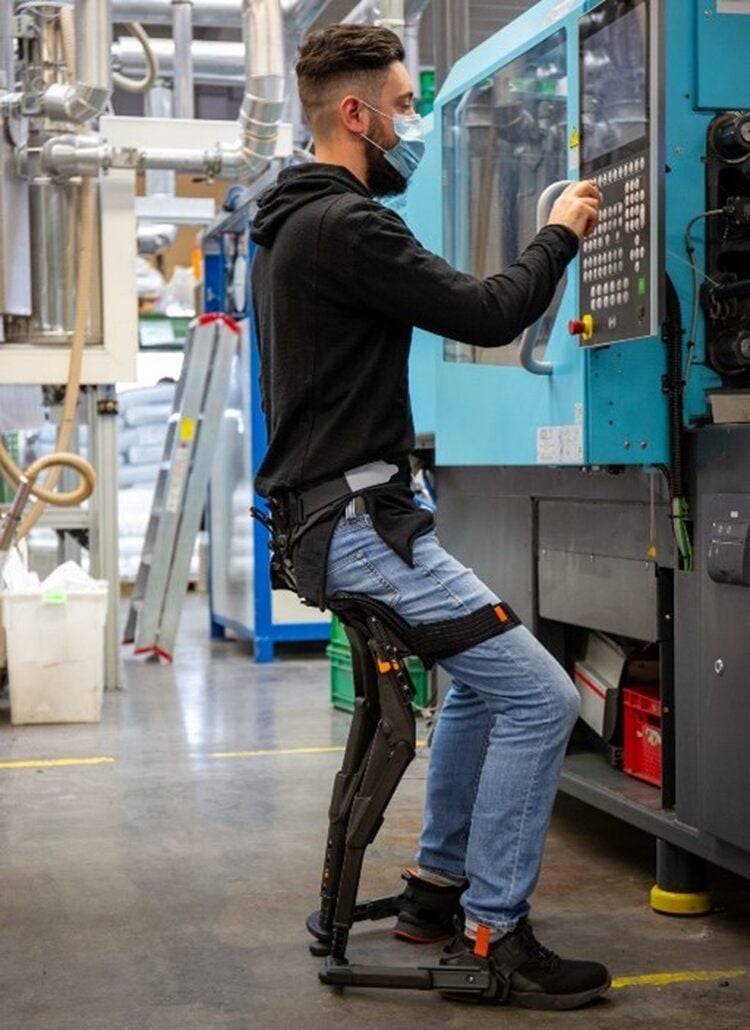
Case Studies / Industrial Robots / Service Robots / Mobile Robots / Robots addressing the UN SDGs / Robots in Daily Life / Collaborative Robots
Robots improve health at work
Robots in Daily Life
Sep 22, 2021 — Robots can significantly improve health at work in industry sectors that involve heavy lifting, including manufacturing, logistics, healthcare and retail. Chronic and acute injuries due to heavy lifting and unergonomic work take a heavy toll, both on employee health, and on the economy.Over forty percent of European employees report having to work in tiring or painful positions more than one quarter of the time, with 32% being called to lift heavy loads according to Eurofound. In the U.S. MSDs cost approximately one trillion dollars in treatment and lost wages in 2014, accounting for 5.76% of GDP, exceeding defense spending for that year according to the United States Bone and Joint Initiative.
Robots carry the load
Robots carry out dull, repetitive and frequently unergonomic work, fetching and carrying loads and completing tasks that often cause muscle strain. For example, Svedplan uses a fleet of 30 robots to pack 2.6 million wardrobes per year into self-assembly packs for IKEA, doing the heavy lifting of placing the parts in the packages. Using robots has improved productivity at the plant by 45%, enabling Svedplan to remain competitive and avoid job losses.
Mobile robots fetch and carry materials in manufacturing, logistics,healthcare and retail, bringing parts to assembly lines, products to workers in e-commerce who are assembling orders, and linens and other items to nurses and nursing aids.
See the IFR paper ‘A Mobile Revolution - How Mobility is Reshaping Robotics’ for examples of how mobile robots are assisting workers
Cobot assistants improve work for manufacturing employees
Robots support overall wellbeing by enabling workers – from production operators to nurses – to focus on more interesting and satisfying tasks. In manufacturing, for example, robots increasingly work directly alongside production operators as assistants. Many of these are ‘cobots’ – lightweight robots with specially rounded edges, able to slow or stop when a worker comes into their field of operation. They perform parts of the overall task that are the least ergonomic for the employee, while the employee completes the other tasks and ensures the process is carried out correctly. In this video, for example, the robot lifts and places heavy automotive transmission cases, and the production operator then completes assembly.
Exoskeletons take the strain
Exoskeletons – wearable robots – are increasingly adopted in manufacturing and logistics. They are used to provide support for lifting and for working in unergonomic positions, for example screwing parts overhead. They consist of a frame, made from hard or soft materials depending on the manufacturer, attached to the user’s body generally at the hip as well as the thighs and upper-arms. They can be mechanical, providing support once the wearer’s arm is in place, or motorized, providing extra force for lifting.
There are also wearable robotic stools which enable workers to sit when part of their work is carried out in a stationary position. These lightweight exoskeletons are attached to the feet and hips and adjusted to the wearer’s height and shoe size. They extend to allow walking and then compress into an ergonomic seating position when the wearer bends their knees.

At some point, nurses may wear exoskeletons for support in moving patients - however healthcare organizations typically have budget constraints which would require a lower price-point than is currently the case. However, other robotic support for lifting patients in hospital is being trialled. For example, the Patient Transfer Assist from Toyota Motor Corporation combines weight-supporting arms with a mobile platform to help caregivers transfer patients from beds to chairs or toilets and back.



